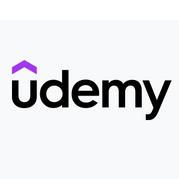🧠 Choosing the Best Database: A Beginner-Friendly Guide
 Stephen Adebanjo
Stephen Adebanjo
When you’re building your next app or project, the database you choose can make a huge difference.
Should you go with MongoDB or MySQL? Firebase or PostgreSQL?
It’s not just about what’s popular — it’s about what fits your needs. Whether you're storing blog posts, managing users, or building a real-time chat app, choosing the right database sets the foundation for everything else.
In this post, we’ll break down the types of databases, when to use them, and how to make the right choice without overthinking it.
🧩 The Two Main Types: SQL vs NoSQL
At the highest level, databases fall into two big categories:
✅ SQL (Relational Databases)
Examples: MySQL, PostgreSQL, SQLite
Structure: Data is stored in tables with rows and columns
Best for: Structured data with defined relationships
Use cases: E-commerce sites, banking apps, inventory systems
SQL databases are great when you need clear structure, complex queries, and data integrity.
🔄 NoSQL (Non-Relational Databases)
Examples: MongoDB, Firebase, Redis
Structure: Data is stored in JSON-like documents, key-value pairs, or graphs
Best for: Flexible, fast-moving projects with dynamic data
Use cases: Real-time chat apps, social networks, mobile apps
NoSQL shines when your data doesn't always follow the same structure or you want scalability with speed.
🛠️ How to Choose the Right One
Here are some common scenarios and what database suits them best:
🏪 Building an E-commerce Platform?
Go with SQL (like PostgreSQL or MySQL). You’ll need relationships between users, products, and orders.
📲 Building a Real-Time Chat App or Social Platform?
Try NoSQL like Firebase or MongoDB. They’re fast, scalable, and built for flexibility.
🎯 Need something simple and fast for a local project?
Use SQLite — no setup required, and perfect for prototyping or mobile apps.
💡 Pro Tips for Beginners
Don’t overthink it. Most beginner projects won’t fail because of the database you choose.
Pick a database you can actually understand and work with comfortably.
If your project grows, you can always migrate to another database later.
Want structure? Go SQL. Want flexibility? Go NoSQL.
🌱 Start Small, Grow Big
At the end of the day, what matters most is getting started. Choose the database that feels the least confusing, and learn as you go. You’ll eventually start noticing where each one shines.
Happy building! 🛠️💻
Subscribe to my newsletter
Read articles from Stephen Adebanjo directly inside your inbox. Subscribe to the newsletter, and don't miss out.
Written by
